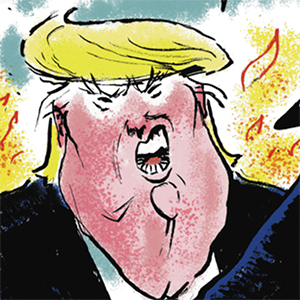National Defense Authorization Act features historic raise for junior enlisted troops
Published in Political News
WASHINGTON — The compromise National Defense Authorization Act that both chambers plan to vote on soon would give America’s lowest-ranking military personnel one of the largest raises in U.S. history targeted at a particular category of servicemembers, experts said.
The compromise version of the fiscal 2025 NDAA, released Saturday, would authorize a 14.5% raise for the lowest-ranking enlisted personnel. It is one of many enhancements the bill would make to servicemembers’ lives, from improving the quantity and quality of housing to augmenting childcare for military families.
But it could also create a problem for the Pentagon if Congress does not intervene this month.
The Defense Department will almost certainly be operating for the first few months of the fiscal year on another stopgap spending law. Unless that measure contains additional billions for military pay increases, the armed services will have to cover the raises by moving funds from other programs with “potentially damaging” consequences for U.S. military strength, Defense Secretary Lloyd J. Austin III warned lawmakers in September.
‘Life-changing’ raise
High inflation has made life harder in recent years for junior enlisted personnel in the U.S. military, thousands of whom have reported trouble adequately feeding themselves and their families. The armed forces have also faced recruiting challenges that are made more difficult if military pay is not considered competitive.
“Servicemember quality of life concerns are a major cause of low morale and family stress, which are undermining recruitment, retention and military readiness,” said a House Armed Services Committee fact sheet summarizing the NDAA’s newly unveiled “quality of life” provisions.
The newly released compromise NDAA would not only give enlisted personnel in ranks E-1 through E-4 the 14.5% raise in the coming year, it would give the rest of the force a 4.5% raise, which is also higher than usual.
Retired Air Force Lt. Gen. Brian T. Kelly, the president and CEO of the Military Officers Association of America, said via email that the boost in junior enlisted pay is the largest targeted military pay raise in a quarter-century.
“Congress’ proposed pay raise for junior enlisted personnel is a life-changing amount at a critical time,” Kelly said. “As we face unprecedented threats abroad, ensuring we recruit those willing to answer the call and join the uniformed services is vital to our national defense.”
‘Significant’ changes
The final NDAA was a compromise that gave the House more than two-thirds of what it wanted for a junior enlisted pay raise.
The House-passed NDAA had recommended a 19.5% raise for junior enlisted personnel, including the 4.5% pay increase that all service members would get, and the Senate Armed Services Committee’s companion measure responded with a 5.5% pay raise for low-ranking troops (and it covered fewer people: E-1 through E-3 instead of E-1 through E-4.)
The legislation includes the large pay increase despite the fact that the White House, in a June statement of administration policy on the House bill, had “strongly opposed” its junior enlisted raise as too costly.
The House Armed Services Committee’s Quality of Life Panel first proposed the substantial junior enlisted raise.
Rep. Don Bacon, R-Neb., chairs that panel, and Rep. Chrissy Houlahan, D-Pa., is its ranking member.
Houlahan said in an interview that she is pleased with the final NDAA outcome on military personnel matters.
Investing in servicemembers is not just a matter of providing housing, health care or spousal employment opportunities, Houlahan said.
“It also comes with making sure that people have competitive pay with the outside community and the outside environment,” said Houlahan, a former Air Force captain who comes from a military family. “So I’m very glad that we came to an agreement on significantly raising the salaries of the E1 through E4.”
‘Quality of Life’ enhancements
The bicameral compromise version of the fiscal 2025 NDAA was released on Saturday. The House plans to vote on it this week, and the Senate intends to follow suit before the holidays.
A version of the bill has become law annually for more than six decades.
The junior enlisted pay raise was the most dramatic of several NDAA changes aimed at improving servicemembers’ lives.
The measure would also authorize more than $2 billion for construction of military housing and barracks and for ensuring the quality of those residences.
The compromise legislation would also authorize construction of more Defense Department schools and child care centers and increased medical staffing.
Congress will need to appropriate those additional funds, as well as the money for higher pay, in a fiscal 2025 Defense spending measure, which will probably not be enacted until March at the earliest.
The NDAA also makes it easier for military spouses to keep their professional licenses as they move from state to state — an effort to address the estimated 20% spousal unemployment that is hurting the pocketbooks of military families.
“I’m gratified that Congress has recognized the importance of military family quality of life and included vital provisions to support families’ well-being in this year’s NDAA,” said Eileen Huck, acting director of government relations at the National Military Family Association. “Increasing junior enlisted compensation, supporting spouse employment and making child care more accessible and affordable will help ease the challenges of military life and provide much-needed support to military members tasked with the job of defending our country.”
Billions in added costs
But the changes to the military pay tables are expensive.
The White House’s statement of administration policy on the House bill said the junior enlisted pay raise would make a “significant, permanent change.”
While the NDAA’s proposed raises only cover one year, they would boost the dollar amounts on which servicemembers’ future percentage raises would be based, increasing costs in later years.
The administration noted that if the 4.5% across-the-board raise is enacted, servicemembers’ base pay over the last three years would have grown by a total of 15%, on top of boosts to housing allowances and subsistence pay.
The statement did not mention that inflation had also greatly increased in the same time frame.
Estimates vary on the cost of the junior enlisted raise, but it appears it would likely cost several billion dollars a year.
The Pentagon has estimated that the 4.5% across-the-board raise by itself will add $5.2 billion to personnel costs in fiscal 2025.
Money for any and all of these additional payments may or may not be included in the next continuing resolution that Congress plans to clear by Dec. 20.
If the funds are not part of the next CR, Austin wrote in his September letter to lawmakers, the Pentagon would have to pay the raises anyway and would do so by “cutting into other programs and accounts at potentially damaging levels” and that, in turn, “adds risk to readiness and operations,” Austin wrote.
Houlahan, for her part, chastised her colleagues for repeatedly not passing on-time appropriations to pay for what the NDAA authorizes.
“It’s our responsibility to not just pass a CR but to pass appropriations budgets for all the different areas that we are responsible to and for,” Houlahan said. “And I think it’s our failure, and it’s at our peril, to not pass those pieces of legislation in addition to the NDAA. I’m disappointed and frustrated that we have lost our way.”
©2024 CQ-Roll Call, Inc., All Rights Reserved. Visit cqrollcall.com. Distributed by Tribune Content Agency, LLC.



























































Comments